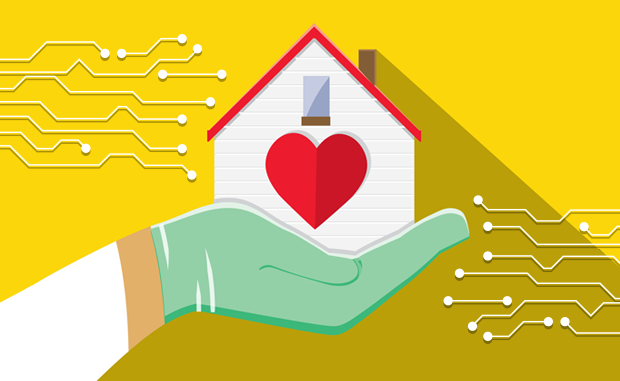4 Home Care Technologies to Prioritize Leave a comment

America, and for that matter the world, is facing a growing challenge in caring for two expanding groups of patients — those 60 and older and patients with such chronic diseases as cancer, diabetes and obesity.
Across the globe, the 60-and-older population is increasing quickly and will surpass 2 billion by 2050, according to the World Health Organization. Meanwhile, caring for the 60% of U.S. adults who have at least one chronic disease accounts for $3.7 trillion in annual health care costs, states the Centers for Disease Control and Prevention.
The ability to monitor health and deliver care outside traditional medical settings could significantly reduce this expenditure, notes a recent CB Insights report. The analysis examines home care tech markets that providers should prioritize over the next three to five years.
We explore some technologies CB Insights analysts say providers should scrutinize over the next one to three years and what’s been happening in these sectors.
4 Home Care Technologies to Explore
1 | At-home Infusion
This technology enables patients to have intravenous treatments like dialysis at home. Wirelessly connected infusion pumps share data with providers to platforms that monitor treatment regimens. Providers are turning to these devices to support convenient, consumer-focused care. Investments in this tech sector are up significantly over the last two years, with mega funding rounds going to Somatus ($325 million), Quanta Dialysis Technology ($245 million) and Monogram Health ($160 million).
Key Takeaway
Providers should be selective before investing in this technology to ensure that comprehensive solutions support key considerations like ease of administration, infection monitoring and prevention, and tools to determine post-infusion status, the report states.
2 | Virtual Clinical Exam Rooms
Exam tools ranging from digital stethoscopes to comprehensive digital medical kits provide diagnostic-quality equipment to the home to support virtual visits. The virtual care equipment market was worth $3.5 billion in 2021, according to a Global Market Insights report and is estimated to grow at a compound annual growth rate of 17.3% through 2028.
Key Takeaway
Advanced exam tools, especially those with built-in artificial intelligence, will become a more prominent component to support remote diagnosis and treatment decisions.
3 | Digital Therapeutics
These solutions combine evidence-based research with digital technologies to provide treatment options for ongoing medical issues that can be addressed in the home. The technology provides apps and digital tools to support issues ranging from mental health to the management of diseases related to gastroenterology, endocrinology and cardiology. Digital therapeutics companies have received more than $1.1 billion in funding over the past five years and the sector is evolving quickly as Food and Drug Administration-approved, clinically validated therapies find their way to the market.
Key Takeaway
Monitor this sector to identify therapies that deliver benefits across multiple specialties and conditions. Evaluate the technology based on ease of use, whether the solutions provide easy-to-grasp content and meet the disparate needs of the populations you serve.
4 | Home Care Management Platforms
This technology supports the transition from an acute care setting to the home to help ensure effective care coordination. These platforms traditionally have focused on care for those with chronic conditions and the elderly, but newer solutions also focus on parents who are caring for infants. The technology ranges from supporting the scheduling of ongoing care to monitoring whether patients have been attending to existing care needs.
Key Takeaway
Evaluate these systems to ensure that investments will fit with your comprehensive growth strategy for managing multiple patient populations, including the elderly, patients with chronic diseases and acute care patients.



